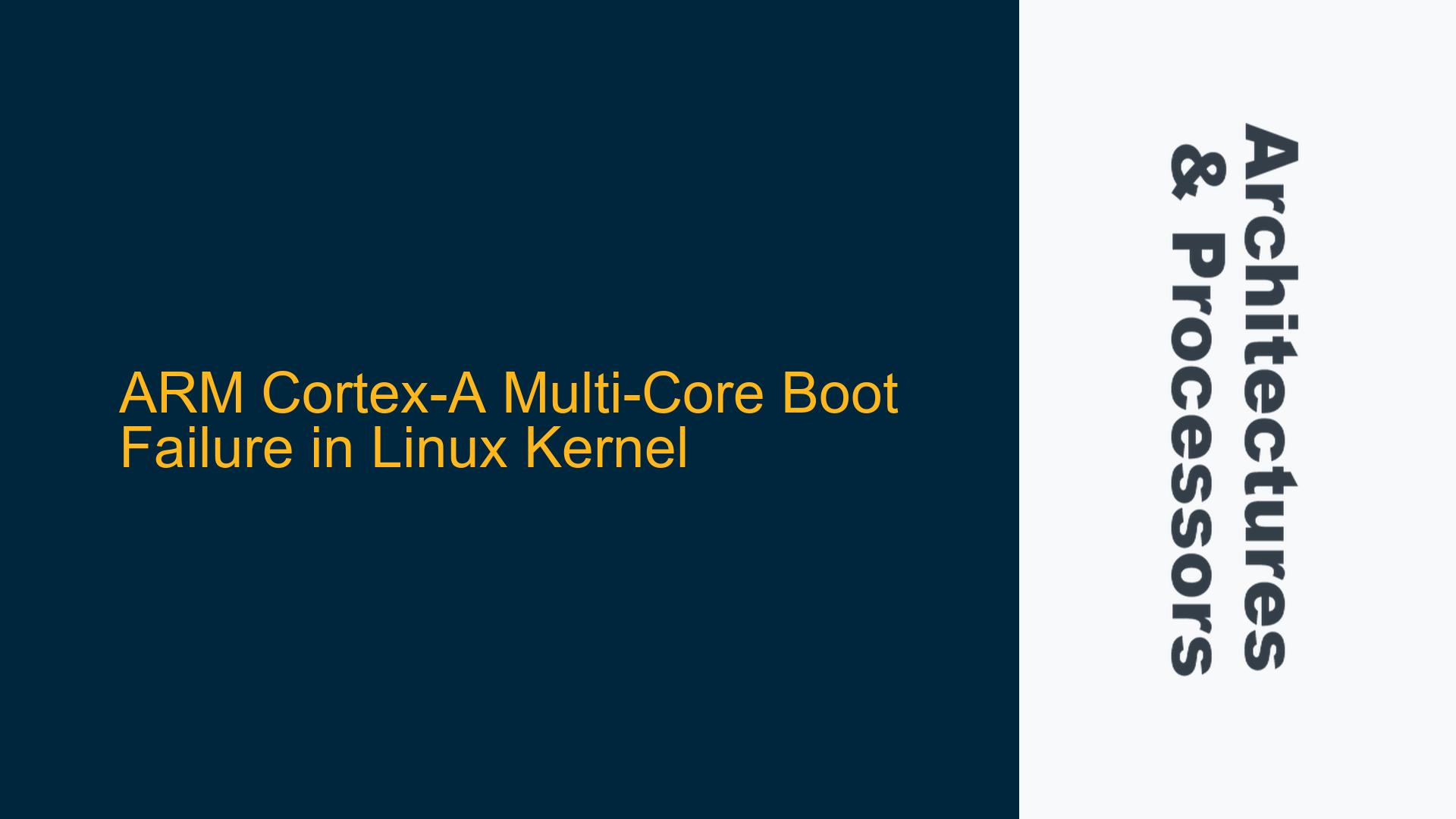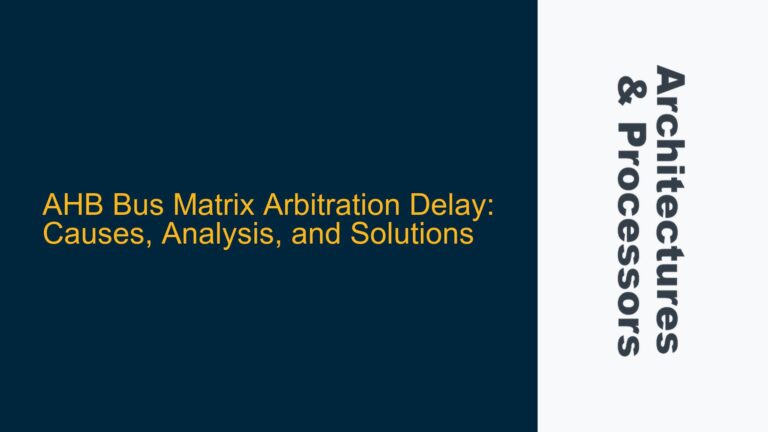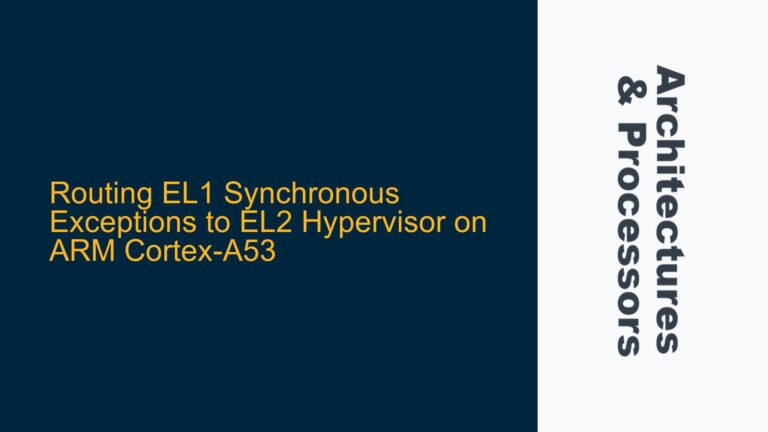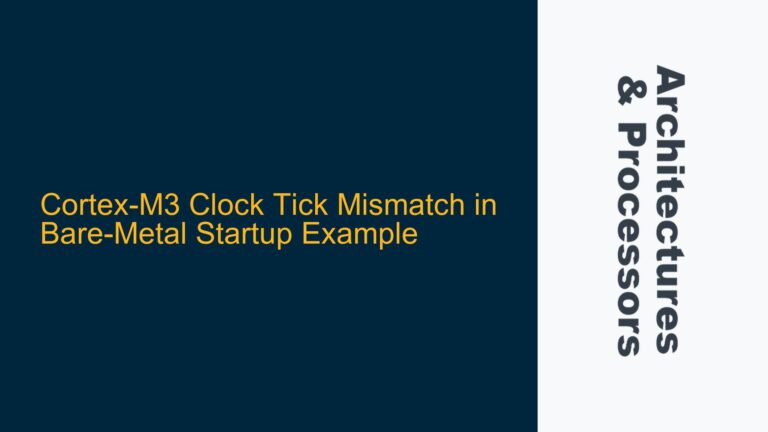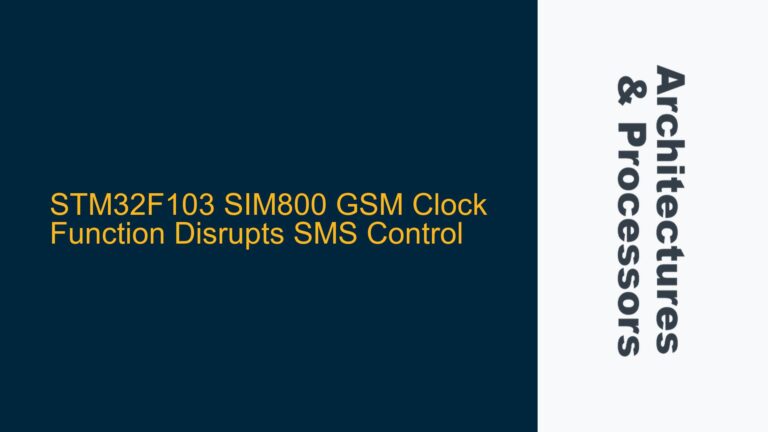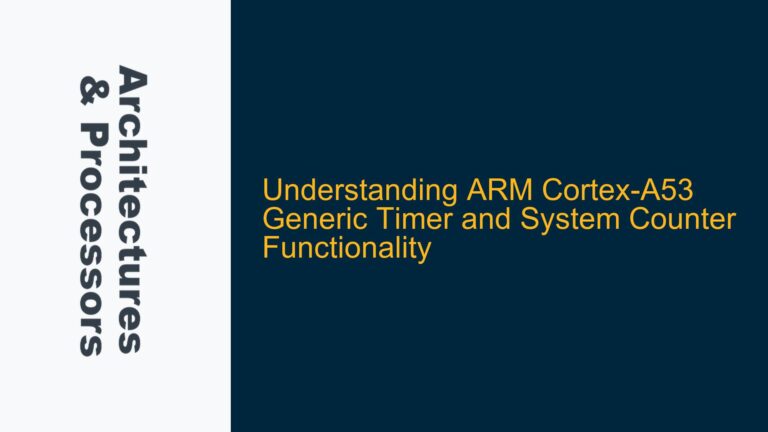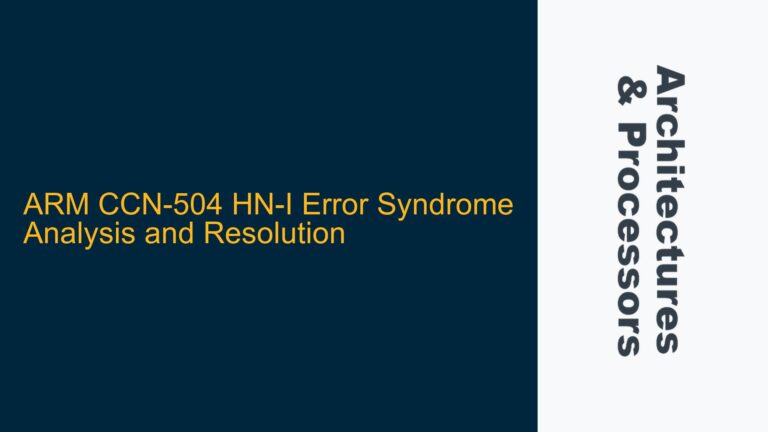ARM Cortex-A Multi-Core Boot Failure in Linux Kernel
The issue described involves the Linux kernel hanging during the boot process when attempting to bring up secondary CPUs in a multi-core ARM Cortex-A processor cluster. Specifically, the kernel fails to boot CPU1, resulting in a system hang. This problem only occurs when there are multiple cores within a single cluster, but the system boots successfully when only a single core (either little or big) is present in the cluster. This behavior suggests a fundamental issue with the kernel’s handling of multi-core initialization, cache coherency, or inter-core communication within the cluster.
The symptoms observed in the boot log include the kernel successfully initializing data structures such as the dentry cache, inode cache, and mountpoint cache. However, the boot process stalls at the point where secondary CPUs are brought online, as indicated by the log message: smp: Bringing up secondary CPUs .... This failure is critical because it prevents the system from utilizing all available cores, severely limiting performance and functionality.
To understand the root cause of this issue, we must examine the ARM Cortex-A architecture, the Linux kernel’s SMP (Symmetric Multiprocessing) initialization process, and the specific hardware-software interactions that occur during multi-core boot. The problem is likely related to one or more of the following: improper configuration of the CPU cluster, cache coherency issues, missing or incorrect memory barriers, or flaws in the kernel’s handling of multi-core synchronization.
Cache Coherency and Inter-Core Synchronization Issues
One of the most common causes of multi-core boot failures in ARM Cortex-A processors is cache coherency problems. ARM processors rely on the Cache Coherent Interconnect (CCI) or similar mechanisms to maintain consistency between the caches of different cores. If the cache coherency protocol is not properly configured or enforced, cores may fail to synchronize during boot, leading to a hang.
In the context of the described issue, the failure to boot CPU1 suggests that the primary core (CPU0) is unable to communicate with or wake up the secondary core. This could be due to a lack of cache coherency, which prevents CPU1 from seeing the correct state of shared memory regions used for inter-core communication. Additionally, the problem may be exacerbated by the presence of multiple cores within the same cluster, as the coherency protocol becomes more complex with increasing core counts.
Another potential cause is the omission of memory barriers or data synchronization barriers (DSBs) in the kernel’s SMP initialization code. ARM processors require explicit memory barriers to ensure that memory operations are performed in the correct order across multiple cores. If these barriers are missing or incorrectly placed, one core may attempt to access a shared resource before another core has finished modifying it, leading to undefined behavior or a system hang.
The issue could also stem from incorrect configuration of the CPU cluster’s power management or reset logic. ARM Cortex-A processors often include power domains and reset controllers that must be properly initialized to enable secondary cores. If the reset signal for CPU1 is not asserted or deasserted at the correct time, the core may fail to boot. Similarly, if the power domain for CPU1 is not enabled, the core will remain in a low-power state and be unresponsive to boot attempts.
Implementing Cache Management and Inter-Core Communication Fixes
To resolve the multi-core boot failure, we must address the potential causes outlined above. The first step is to ensure that cache coherency is properly configured and enforced. This involves verifying that the Cache Coherent Interconnect (CCI) or equivalent hardware is correctly initialized and that the kernel’s cache management routines are functioning as expected. Specifically, the kernel should invalidate and clean the caches of all cores during the boot process to ensure a consistent view of memory.
Next, we must review the kernel’s SMP initialization code to ensure that all necessary memory barriers and data synchronization barriers are present. The ARM architecture provides several types of barriers, including DSB (Data Synchronization Barrier), DMB (Data Memory Barrier), and ISB (Instruction Synchronization Barrier). These barriers must be strategically placed in the code to ensure that memory operations are performed in the correct order across cores. For example, a DSB should be used after writing to shared memory regions to ensure that the write is visible to other cores before proceeding.
We should also verify the configuration of the CPU cluster’s power management and reset logic. This involves checking the device tree or platform-specific initialization code to ensure that the reset and power control signals for CPU1 are correctly configured. If necessary, we may need to add delays or additional checks to ensure that CPU1 is fully powered on and out of reset before attempting to boot it.
Finally, we must consider the possibility of hardware-specific issues or errata that could affect multi-core boot. ARM processors often have errata that require workarounds in the kernel or bootloader. These workarounds may involve modifying the initialization sequence, applying specific register settings, or adding delays to account for hardware timing requirements. Consulting the processor’s technical reference manual and errata documentation is essential to identify and address such issues.
In conclusion, the multi-core boot failure in the ARM Cortex-A processor is likely caused by cache coherency issues, missing memory barriers, or incorrect configuration of the CPU cluster’s power and reset logic. By carefully reviewing and addressing these potential causes, we can resolve the issue and enable successful booting of all cores in the cluster. This will ensure that the system can fully utilize its multi-core capabilities, improving performance and functionality.
